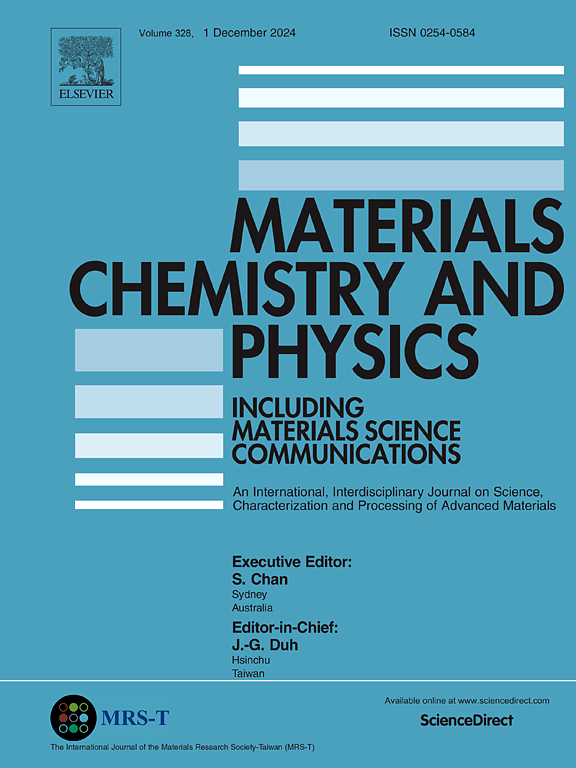Effect of V2O5 coatings on NMC 111 battery cathode materials in aqueous process
IF 4.3
3区 材料科学
Q2 MATERIALS SCIENCE, MULTIDISCIPLINARY
引用次数: 0
Abstract
In this study, we focused on the effect of different percentages of coating on the chemical stability of NMC 111. Stability and leaching studies were conducted in solutions at varying pH levels to quantify the influence of coating percentage and exposure conditions on chemical stability. Our findings indicate effective protection of NMC 111. The slurries containing coated particles remain stable across acidic, neutral, and basic pH ranges. This observation provides a broad aqueous processing window for coated NMC 111, preventing lithium-ion leaching. For the uncoated samples, the measured pH consistently remained in the basic range, regardless of the initial pH, indicating a strong reaction between NMC 111 and water that leads to the formation of hydroxides. In contrast, for the coated samples, the reaction predominantly involves . The thicker coatings (3% and 4% by weight) are particularly effective in reducing lithium leaching. XRD analysis suggests that the coating helps minimize cation mixing. XPS, TEM, and SEM-EDS morphological characterization were performed to confirm the presence of the coating on the surface of the samples. Additionally, the coating percentage and its effect on charge transfer resistance in sintered samples were discussed and analyzed using EIS with Ag as an ion-blocking agent.
求助全文
约1分钟内获得全文
求助全文
来源期刊

Materials Chemistry and Physics
工程技术-材料科学:综合
CiteScore
8.70
自引率
4.30%
发文量
1515
审稿时长
69 days
期刊介绍:
Materials Chemistry and Physics is devoted to short communications, full-length research papers and feature articles on interrelationships among structure, properties, processing and performance of materials. The Editors welcome manuscripts on thin films, surface and interface science, materials degradation and reliability, metallurgy, semiconductors and optoelectronic materials, fine ceramics, magnetics, superconductors, specialty polymers, nano-materials and composite materials.
 求助内容:
求助内容: 应助结果提醒方式:
应助结果提醒方式:


